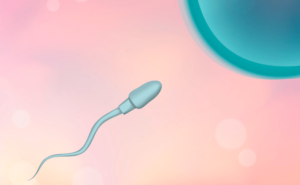Summary of This Article
Breech position refers to a state where the fetus’s head is not downwards, medically termed as “pelvic presentation.” Causes include uterine abnormalities, placenta previa, low-lying placenta, oligohydramnios, or polyhydramnios. Breech exercises can encourage the fetus to rotate on its own. However, since these exercises may induce uterine contractions, it is important to consult with a doctor before performing them.
What is Breech Position
Breech position refers to a state where the fetus’s head is not downward, and it is medically termed as “pelvic presentation.”
Until the mid-pregnancy period, the fetus changes its position frequently within the uterus. However, as the pregnancy progresses and the fetus grows larger, its head becomes heavier, leading to a “cephalic position” where the head is directed downward. When this does not occur, it is commonly referred to as a breech position.
Causes of Breech Position
The majority of breech positions have unknown causes, and it is unclear whether they are hereditary. However, the following factors are considered to increase the risk of breech position:
- Uterine abnormalities (such as fibroids or congenital malformations)
- Placenta previa or low-lying placenta
- Oligohydramnios or polyhydramnios
- Multiple pregnancies
- Narrow pelvic width
- Intrauterine growth restriction (IUGR)
- Fetal abnormalities (such as hydrocephalus or anencephaly)
- Previous cesarean delivery
Types of Breech Position
There are several types of breech positions based on the fetus’s posture.
- Frank breech: The fetus has its buttocks pointed downward and legs extended straight up in a V shape. This position accounts for 80% of breech cases. Vaginal delivery is possible, but most first-time mothers will undergo a cesarean section.
- Complete breech: The fetus sits cross-legged. The combined width of the legs and buttocks passing through the birth canal can be larger than the head. Vaginal delivery is possible, but there is a risk of emergency cesarean section.
- Footling breech: The fetus stands with both feet (complete footling) or one foot (incomplete footling) down. The feet come out first, followed by the head, which can endanger the fetus. Cesarean delivery is generally preferred.
- Kneeling breech: The fetus kneels with both knees (complete kneeling) or one knee (incomplete kneeling). Like the footling breech, cesarean delivery is typically preferred due to similar risks.
- Transverse lie: The fetus is lying horizontally. Shoulders or hands may come out first, and the head, being larger, cannot pass through the birth canal. This usually necessitates a cesarean delivery. Most fetuses will rotate to a head-down or breech position before birth.
Risks of Breech Position
Brain Development
Just because a fetus is in a breech position does not mean there is an increased likelihood of abnormal brain development or physical abnormalities.
Risks During Delivery
In cases of breech position, there is a higher possibility of early water breaking, which increases the risk of preterm birth. Additionally, there is an elevated risk of umbilical cord prolapse, where the cord comes out before the fetus.
During vaginal delivery, there is a risk that the baby’s head may get stuck in the pelvis, making delivery difficult. This makes vaginal delivery more risky compared to head-down (cephalic) position. Depending on the situation, a cesarean section may be recommended, and there is a possibility of emergency cesarean delivery.
If Diagnosed with Breech Position
As the pregnancy progresses, breech positions often resolve on their own. In the early weeks of pregnancy, there is no need to worry too much; just monitor the progress.
Even if a breech position is diagnosed in the later stages of pregnancy, it can still correct itself before the delivery date. Additionally, there are measures such as breech exercises and external cephalic version (ECV) that can be considered, so follow your doctor’s instructions.

Timing of Breech Position Diagnosis
Early Pregnancy
In early pregnancy, the baby is still small and changes position frequently within the uterus. As a result, breech positions are common during this period.
However, since the fetus moves around a lot at this stage, a breech position during a check-up is usually considered temporary.
During pregnancy, it’s natural to feel worried or anxious about the baby. Some congenital abnormalities in babies are due to chromosomal issues, which can be detected through prenatal testing.
There are several methods for prenatal testing. Amniocentesis and chorionic villus sampling (CVS) provide definitive diagnoses but carry a risk of miscarriage.
NIPT (Non-Invasive Prenatal Testing) can be conducted with only a blood sample from the mother. Although it is not a definitive diagnosis, it can detect Down syndrome (trisomy 21) with 99.9% sensitivity and specificity.
Since these tests can be performed once pregnancy is confirmed by an ultrasound, those who are concerned should consider discussing them with their healthcare provider.
Mid Pregnancy
Until mid-pregnancy, like in early pregnancy, the fetus continues to change its position within the uterus. This often results in a breech position.
If you are told during a check-up that your baby is in a breech position, try not to worry too much, as the baby is likely to return to the normal position later on.
Additionally, in mid-pregnancy, it is common to start feeling fetal movements. If the baby is in a breech position, you may feel these movements more in the lower abdomen since the feet are positioned downward.
Late Pregnancy
If the baby is still in a breech position in the later stages of pregnancy, specifically after 30 weeks, it is more likely to be diagnosed as breech.
However, even at this stage, the baby can still turn to the correct position before delivery. Measures such as breech exercises and external cephalic version (ECV) can be considered, so it is important to follow your doctor’s instructions and monitor the situation.
As we have seen, breech position is not a concern in the early stages of pregnancy. But how long should you wait before taking action?
It is advisable to monitor the situation until mid-pregnancy. If the breech position persists into late pregnancy, follow your doctor’s advice and consider measures like breech exercises or ECV.
Delivery Methods for Breech Position
In late pregnancy, if the baby is in a breech position, a cesarean section is often recommended. However, vaginal delivery may still be possible under certain conditions, such as in cases of frank breech or complete breech. Even in these cases, there is still a possibility that an emergency cesarean section may be required during delivery.
Ways to Correct Breech Position
Breech exercises, known as breech exercises, can encourage the fetus to turn on its own. However, since they can cause uterine contractions, always consult a doctor before performing them.
Breech Exercises
- Knee-Chest Position
From an all-fours position, lower your head, elbows, and chest to the floor while keeping your knees bent and your hips elevated. Hold this position for about 10 to 15 minutes with your face down and hips raised.
- Bridge Method
Lie on your back on the floor with your knees bent and feet hip-width apart. Place a cushion or similar support under your hips to elevate them. Maintain this elevated position for about 10 to 15 minutes.
- Side-Lying Position
Lie on your side with the baby’s back facing upwards.

If Breech Position Persists
Cesarean Section
Vaginal delivery of a breech baby carries various risks, including birth injuries such as fractures and nerve damage, neonatal asphyxia or stillbirth due to umbilical cord prolapse, and neonatal asphyxia or stillbirth caused by prolonged labor.
To avoid these risks, many facilities opt for cesarean delivery for breech presentations.
External Cephalic Version
One method for correcting a breech position is external cephalic version (ECV). This procedure is performed in a hospital.
The procedure involves elevating the lower part of the mother’s body so that the baby moves toward the head. The practitioner uses ultrasound to check the baby’s position, then grasps the baby’s head and buttocks from outside the mother’s abdomen and attempts to rotate the baby.
During the procedure, it is common to use a tocolytic drip to relax the uterine muscles and make it easier for the baby to turn. Additionally, anesthesia may be used to relax the abdominal muscles.
Conclusion
When breech position is indicated during prenatal check-ups, it is natural to feel worried, but most cases will correct themselves before delivery.
Even if a breech position is diagnosed in late pregnancy, there are measures such as breech exercises and external cephalic version (ECV) to address it. Therefore, it is important not to worry excessively and to follow your doctor’s instructions.
If the breech position does not resolve by the end, vaginal delivery may be difficult, but a cesarean section is a viable option. Breech position is not considered to be a cause of disability for the baby, so try not to worry too much.
Article Editorial Supervisor

Dr Hiroshi Oka
NIPT specialist clinic, MD
Graduated from Keio University, School of Medicine
 中文
中文






















